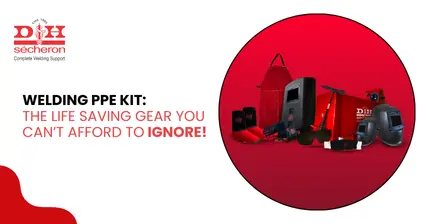Understanding Welding Symbols & Diagrams
Welding symbols are critical information for welders to do their job perfectly. Welding symbols contain important information such as welding positions, welding processes, dimensions, geometry of the weld, groove/fillet details, etc. These symbols are presented graphically by the designer for the welders. You can say that it is a universal language in welding to maintain uniformity, consistency and accuracy.
Use of Welding Symbols on Drawings
The welding symbols indicate the welding processes deployed in metal joining operations. They show all information necessary to understand the basic shape and locations of welding components.
Here are the five most commonWelding Symbols with Examples
-
Groove-V
A groove weld is used to show parts coming together in the same plane. It is usually performed to make edge-to-edge joints but they are also sometimes used for corner joints, T joints, and joints between curved & flat pieces.
Groove-V gets its name from the V-shaped angle that it gets after the edges of both workpieces are cut off. There can be a single or double Groove-V, that is usually used for thicker materials because it is easy to apply the weld and create a stronger weld.
-
Groove-Bevel
In groove-bevel, the edge of one workpiece is cut-off and the other one is left square. It needs less joint preparation as well as less weld metal. It is also used for thicker materials or when it is possible to modify one of the connecting components.
-
Groove-J
When the edge of one of the pieces gets concave treatment while the other one is left square, it results in a J-shaped angle known as groove-J. The groove cuts in less material which means less weld filler is used. However, groove-J is not as easy or affordable as groove-bevel.
-
Fillet
The fillet weld symbol is represented as a right triangle placed on the reference line with the perpendicular leg on the left. It is used when the two members of the joint come together to form an intersection of 90 degrees. Fillet welds are generally used for boiler and pressure vessel manufacturing industries.
-
Back or Backing
A back weld is formed on the back side of the joint once the groove weld is performed. A backing weld, on the contrary, is applied to the root of the groove before the groove is welded. However, they both use the same symbols.
If you are looking for welding electrodes and consumables, you can consider D&H Sécheron Electrodes Pvt. Ltd. made products that is an ISO 9001-2015 certified company and a trendsetter in the welding consumables industry since its inception in 1966.
11 May 2025 | Welding
An In-Depth Exploration of Low-Alloy Steel: Your Comprehensive Guide
11 May 2025 | Welding
Nagpur - Bori - Tuljapur Road MSH-3 in Yavatmal District (Maharashtra)
11 May 2025 | Welding
Guidelines to Understand Gas Welding: Applications, Advantages & Disadvantages
11 May 2025 | Welding
3 Tips for Finding the Best Mild Steel Electrode for Your Application
11 May 2025 | Welding
How to Select the Right Welding Filler Wires for Stainless Steel Welding?
11 May 2025 | Welding
Building the Narendra Modi Stadium with Norma V and Autotherme-1 Electrodes
11 May 2025 | Welding
Low Alloy Steel Welding in a (PEB) Pre Engineered Building Structure
11 May 2025 | Welding
Welding Rods: Different Types and Tips for Properly Storing and Handling
11 May 2025 | Welding
Tips for Flawless Welds with Stainless Steel Electrodes: Pros and Cons
11 May 2025 | Welding
Exploring Applications and Benefits of Stainless Steel Welding Electrodes
11 May 2025 | Welding
Welding Basics: Joining Metals with Heat and Pressure - A Beginners Guide
11 May 2025 | Welding
Distinguishing Low-Alloy Steel from High-Alloy Steel: Understanding the Variations
11 May 2025 | Welding
Hard Facing Wire - Understanding the Process and Achieving Optimal Result
11 May 2025 | Welding
Exploring the Advantages of Stainless Steel Electrodes in Welding Applications
11 May 2025 | Welding
Weathering Steel vs. Traditional Steel: A Comparative Analysis of Performance
11 May 2025 | Welding
Choosing the Right Welding Rod: Why 6013 Electrodes Might Be Your Ideal Option
11 May 2025 | Welding
Why 7018 Electrodes Are Preferred for High-Strength Welds in Pipeline Construction
11 May 2025 | Welding
Filler Wire vs. Stainless Steel Filler Wire: Understanding the Key Differences
11 May 2025 | Welding
Exploring the Impact of Filler Material on Welding Quality and Durability
11 May 2025 | Welding
Choosing the Right Cast Iron Electrode for Different Welding Projects
11 May 2025 | Welding
Top Advantages of Cast Iron Electrodes for Industrial Welding Applications
11 May 2025 | Welding
Key Benefits and Challenges of Using TIG Welding in Industrial Projects
11 May 2025 | Welding
5 Reasons Why 7018 Electrode is the Gold Standard for Welding Professionals
11 May 2025 | Welding
Top 5 Advantages of Flux Cored Arc Welding for Heavy-Duty Applications.png)
11 May 2025 | Welding
Lotherme-601: A Game-Changer for Restoring Shoulder Pins in Heavy Machinery
11 May 2025 | Welding
How D&H Sécheron Helped Repair a Rotary Kiln’s Cooler Section with LoTherme 352
11 May 2025 | Welding
Piston Repair for Mining Industry: Cost-Effective Solutions with LoTherme 468.webp)

.jpg)





.jpg)








































.jpg)
.jpg)


.jpg)





.jpg)
.jpg)
.jpg)



.webp)
.jpg)
.jpg)
.webp)
.jpg)






















.png)



.webp)

.webp)
.webp)



